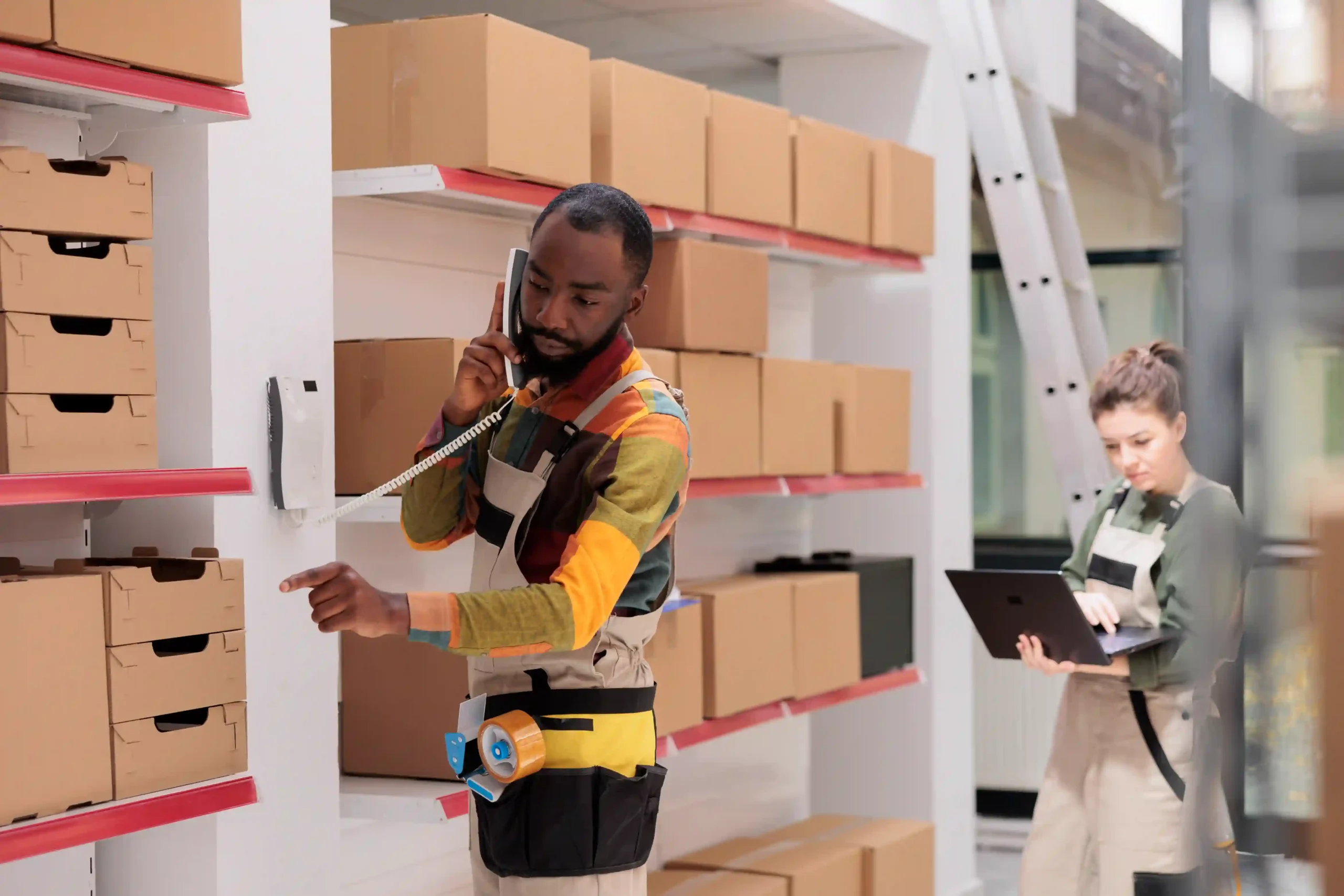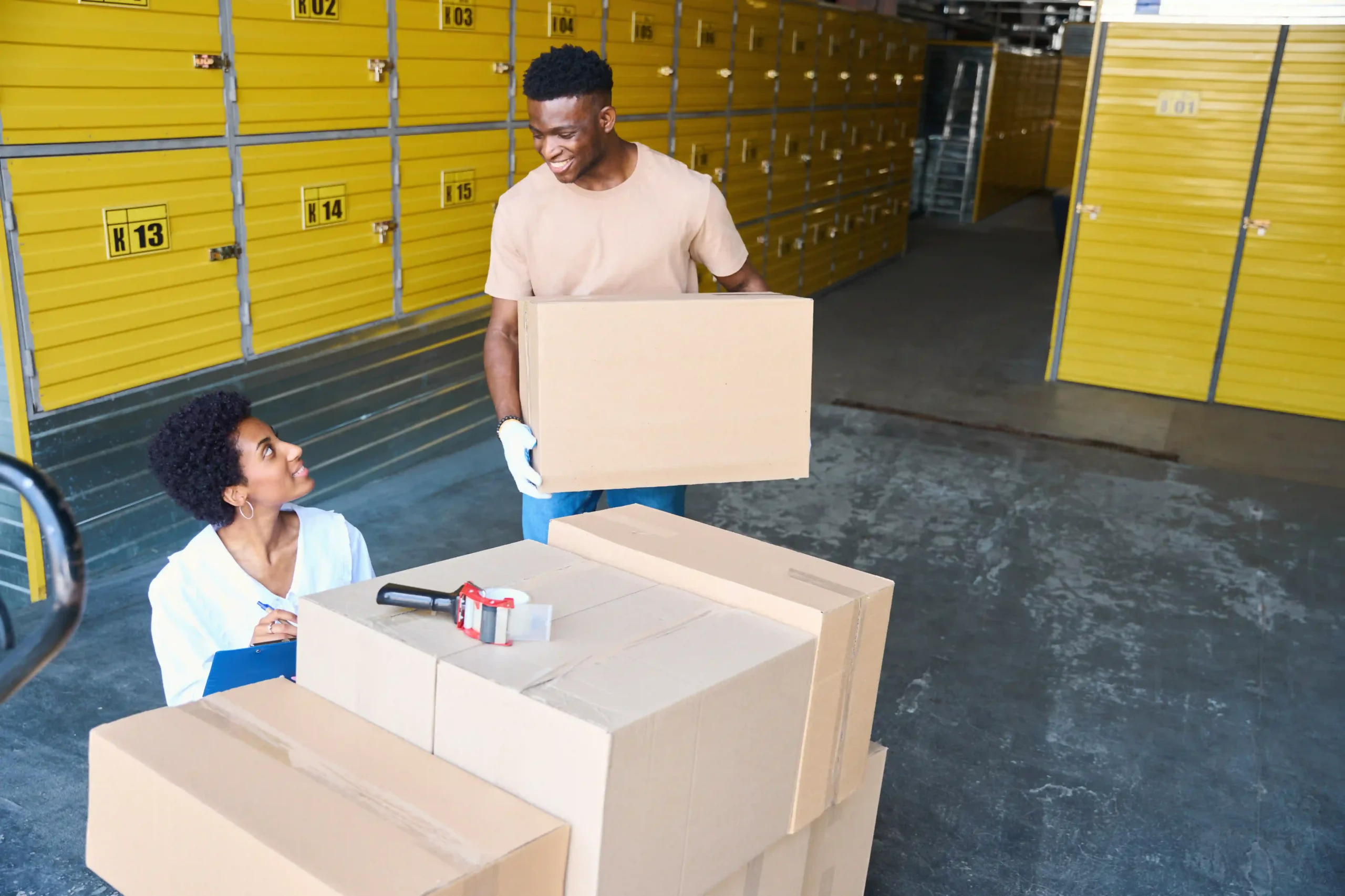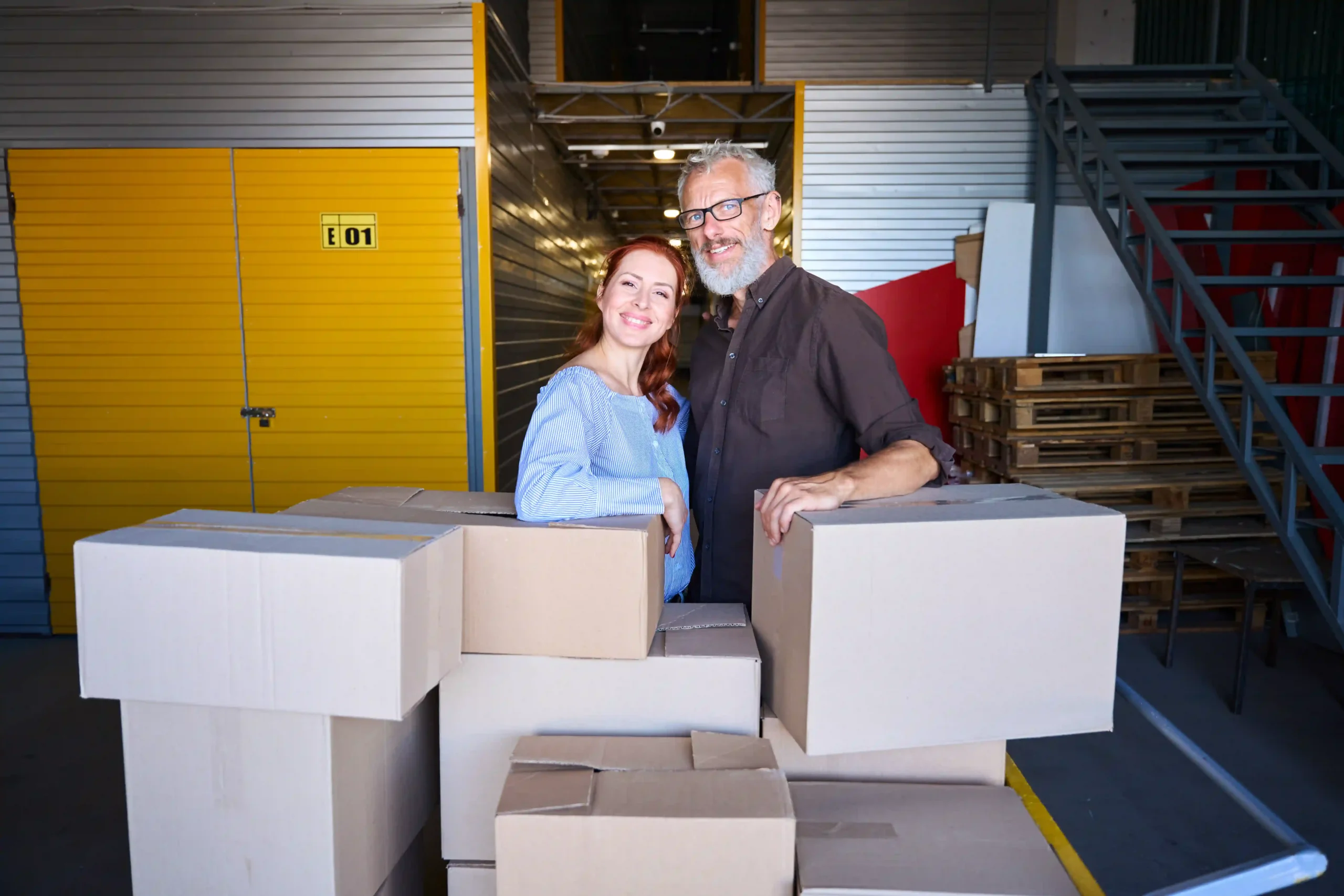In simple terms, 3PL pallet storage cost refers to the amount a business pays to store its goods—stacked on pallets—inside a third-party logistics (3PL) provider’s warehouse. This cost is usually billed monthly and is based on how many pallet spaces your inventory occupies, along with a range of service fees for handling, wrapping, labeling, and more.
These fees form a core part of your total logistics expenses, and understanding them can mean the difference between healthy margins and slowly bleeding capital. At Tri-Link FTZ, with over 35 years in logistics and foreign trade zone services, we’ve seen firsthand how misunderstanding these costs can create chaos in a business’s supply chain.
Companies often get hit with hidden fees, overpay for underutilized space, or choose a storage method that doesn’t suit their volume or SKU mix. My goal here is to help you avoid those traps.

Over the decades, we’ve worked with companies of every shape and size—e-commerce startups, importers, national distributors—and I can confidently tell you: no two 3PLs price storage the exact same way. But most will fall into one of four models: per pallet, per cubic foot, per bin, or per square foot.
The most common is per pallet pricing, which typically ranges between $18–$25 per pallet per month. On average, industry surveys put the cost at about $20.17 per pallet—a stat that’s remained relatively stable over the past three years.
This model is perfect for standardized loads, where each pallet takes up roughly the same amount of space. Some providers, especially those dealing with bulky or non-stackable inventory, opt for cubic foot pricing—around $0.46 per cubic foot per month.
This gives more flexibility but also requires accurate dimensional data from the client. If you’re not sure of your SKU or case dimensions, this model can lead to surprises.
Others go with bin pricing, ideal for smaller items, typically averaging around $3.08 per bin monthly. For larger-scale contracts, we also see square footage pricing (roughly $1.73 per sq. ft), especially in dedicated space models where you’re renting a specific area within the warehouse.
What really makes the difference in pricing is how your 3PL bills—some go by average monthly usage, while others invoice based on daily or weekly “snapshots.” One client we worked with recently saw a 12% reduction in storage costs just by switching to a provider that billed based on average volume over time rather than static weekly peaks.
Now here’s where it gets interesting. Most businesses assume their storage costs are tied directly to the number of pallets they have in a warehouse.
But the reality is more nuanced. One of the biggest factors is location.
Warehousing in high-demand logistics hubs like Los Angeles, New York, or Miami is significantly more expensive than suburban or inland facilities. But that cheaper location might also mean longer transit times, which affect your delivery windows and customer satisfaction.
So cost-efficiency is a balancing act. Another major variable is inventory turnover.
If you’re sitting on slow-moving product, you’re paying storage fees for goods that aren’t making you money. Some 3PLs charge long-term storage surcharges after 6 to 12 months, and I’ve seen companies unknowingly burn thousands of dollars this way.
You also need to consider pallet utilization. Are your pallets full or half-empty?
We’ve had clients storing two boxes on a full pallet and getting billed at full rate. That’s a waste of space and budget.
Proper pallet consolidation can cut storage costs by up to 25%, especially if your 3PL offers flexible bin transitions for low-volume SKUs. Let’s not forget SKU complexity.
A high SKU-to-order ratio means more bins, more sorting, and more labor—which indirectly inflates storage costs. We’ve had clients with 4,000 SKUs shipping 500 orders a week, paying five figures in monthly fees because of the picking complexity alone.
And one often-missed element is pallet height restrictions. If your current warehouse allows for 65” tall pallets but your new provider caps it at 48”, you’ll need more pallet positions—which drives up your bill and possibly adds labor costs for down-stacking.
Where your goods are stored matters. Over the years, I’ve helped businesses assess warehouse locations from coast to coast, and the geographic pricing spread is wider than most expect.
For example, in California, the average 3PL pallet storage cost sits around $23–$28 per pallet, thanks to high real estate and labor costs. In contrast, a Midwest location like Ohio or Indiana might fall closer to $17–$20 per pallet.
That $6 difference seems small, but at 500 pallets a month, you’re talking about $3,000 in monthly savings—or $36,000 annually. You also have to account for seasonal fluctuations. In peak season (typically Q4 for retailers), some providers charge short-term premiums or increase rates due to limited space.
A facility in Dallas might raise rates by 10% in November just because they’re at 95% capacity. Climate also plays a role.
In humid regions like Florida, climate-controlled storage might be required, especially for perishable or sensitive goods. And that can push costs up to $30–$35 per pallet if not more.
We worked with a skincare brand last year that had to move to a humidity-controlled environment mid-contract due to product damage—and the shift increased their storage cost by 40%. If you’re exporting or importing via ports, proximity to port cities may reduce transit costs but increase storage fees.
So the smart play is often a hybrid strategy: store bulk inventory inland at a lower rate, and use a smaller fulfillment hub near your customer base. Read more here.

This is where things can really go sideways if you’re not paying attention. While a provider might quote you a flat $20 per pallet, your actual invoice could include $5,000 in hidden charges.
Here’s what to look for. First, there’s the pallet-in/pallet-out fee—you get charged every time your goods enter or exit the warehouse.
These range from $4 to $8 per movement, and they’re not always clearly disclosed. At Tri-Link FTZ, we make sure our clients understand this before they sign anything, because it can double your expected cost if you have fast turnover.
Then there are labeling, wrapping, and pallet supply costs. Need your pallet shrink-wrapped?
That might be $5 per pallet. Need FNSKU labels? Add $0.50 per label.
Ordering pallets through the 3PL? Some charge cost plus 15% markup.
That adds up fast, especially if you’re replenishing frequently. Client-sourced shipping supplies are another surprise fee.
Some 3PLs charge to store boxes or branded packaging if it’s not ordered through them—especially if the items sit in inventory longer than 30 days. We recommend doing a cost-benefit analysis: compare their markup versus your storage and inbound shipping fees.
Lastly, hazmat handling or insurance surcharges can spike your bill unexpectedly. If your product falls under hazmat guidelines or requires special insurance coverage, always ask if those fees are already included.
We once onboarded a client who didn’t know they were paying a 15% surcharge for “flammable” product classification on cleaning sprays.
Over the years, I’ve seen businesses come in with skyrocketing warehouse bills, convinced there’s no way to reduce costs without compromising service. That’s rarely the case.
Reducing your 3PL pallet storage cost is absolutely possible—you just need the right strategy. The first and most effective move is pallet consolidation.
If you’re paying full price to store half-filled pallets, you’re throwing money away. At Tri-Link FTZ, we regularly help clients consolidate SKUs or reorganize their packaging to maximize pallet height and reduce the number of pallet positions.
This small tweak can save thousands annually. Second, we always suggest reviewing slow-moving inventory.
Storage is not where your money should be tied up—it should be in products that sell. By cutting aged inventory or transferring it to lower-cost overflow storage, you maintain fulfillment speed without eating margin.
Another pro tip is to leverage long-term volume discounts. Many 3PLs (ours included) offer rate reductions if you commit to a higher volume or longer duration.
Clients storing 100+ pallets can often unlock 5–10% savings—but only if they ask. One thing businesses often miss is optimizing SKU-to-order ratios.
If your operation involves 2,000 SKUs and low order volume, it’s going to drive up bin and labor costs. We help clients reduce SKU sprawl by analyzing their order data and identifying product combinations that can be bundled or phased out.
Finally, it’s about tech-enabled visibility. With the right WMS (Warehouse Management System), you can see what’s in storage, what’s aging, and how efficiently your space is being used.
At Tri-Link, we give our clients access to real-time inventory dashboards, which helps them stay proactive rather than reactive when storage fees creep up. Read more here.
Before you sign a contract with any 3PL, these are the exact questions I’d tell you to ask to protect yourself from overpaying and ensure a good fit:
What’s included in the monthly pallet storage cost? This one sounds obvious, but you’d be surprised how often providers quote a base fee that excludes essentials like security, access fees, or reporting.
Do you charge for pallet-in and pallet-out? If so, how much per movement, and are there thresholds that trigger discounts?
What is your max pallet height? We touched on this earlier, but it can drastically change your storage footprint. Make sure your current loads don’t need to be restacked—and if they do, ask who pays for that labor.
What happens if I provide my own packaging or supplies? Some 3PLs charge storage on branded boxes or inserts, while others include it. The cost difference can be staggering over time.
Do you offer scalability or custom rates as my volume grows? You want a partner that grows with you—not someone who penalizes you for getting bigger.
These aren’t just questions—they’re qualifiers. A good 3PL won’t dodge them. They’ll be ready with answers, and if they’re anything like us, they’ll appreciate the fact that you’re doing your homework.

Let’s zoom out for a second. 3PL pallet storage cost is just one piece of a bigger puzzle—and if you’re only focused on monthly storage fees, you might be missing where the real savings or losses are happening.
In my experience, storage typically makes up about 10–20% of a company’s overall logistics spend, depending on the business model. The rest comes from order processing, picking, packing, shipping, and returns.
But here’s the kicker: storage is the most controllable piece of that puzzle. You can’t always control last-mile carrier surcharges or fuel costs, but you can absolutely influence how much inventory you’re storing and how efficiently it’s stacked.
By tightening up your storage strategy, you reduce handling, speed up fulfillment, and cut back on errors—which affects everything downstream. When we build fulfillment strategies for our clients at Tri-Link FTZ, we always start with inventory flow.
If it’s not flowing in and out efficiently, you’re going to pay for it—not just in storage, but in overtime labor, late shipments, and frustrated customers. That’s why mastering this part of your supply chain has a ripple effect across your entire operation.
This is a question I get all the time: Should we just get our own space? Sometimes, the answer is yes.
But more often than not, third-party logistics is the better call, especially for small to mid-sized businesses. Here’s why.
First, there’s cost predictability. A warehouse lease comes with fixed costs—rent, insurance, staff, equipment—that you pay whether you’re full or empty.
With a 3PL, you pay for what you use. If your inventory shrinks in Q1, your costs shrink too. That flexibility is huge for cash flow.
Second, there’s speed and scalability. Opening your own warehouse takes time and capital—often 6+ months and hundreds of thousands of dollars.
With us, you can plug into a fully operational fulfillment network in a week or less, no forklift purchase required. Third, you get expertise. At Tri-Link FTZ, we’ve been doing this for 35+ years.
We’ve seen every peak, every product type, every customs headache imaginable. That experience gets passed on to you, whether it’s designing your storage plan, solving hazmat challenges, or prepping for a trade show.
Fourth—and this is a big one—you can focus on growth. If you’re spending your day managing warehouse workers or fixing inventory errors, you’re not building your brand.
Our clients scale faster because they hand off the back-end so they can focus on the front-end. Lastly, there’s the compliance and legal advantage.
Especially in FTZ environments like ours, you can defer, reduce, or even eliminate customs duties. That alone can be a game-changer if you’re importing large volumes.
There are situations where owning your own warehouse makes sense—maybe you’re massive, with hyper-specific needs. But for 90% of companies, especially those still scaling, 3PL storage is more cost-effective, more efficient, and less risky.
If you’ve made it this far, you’re clearly serious about optimizing your logistics—and I commend you. Storage fees might seem like a dry topic, but once you understand the details of 3PL pallet storage cost, you gain leverage.
You can negotiate smarter. You can make cleaner decisions.
And you can finally feel confident that you’re not overpaying just to house your own product. We’ve built our business at Tri-Link FTZ around transparency, flexibility, and strategic storage solutions.
Whether you’re storing 30 pallets or 3,000, you deserve a partner that tells you what things cost—and why. If you’re evaluating 3PL options right now, or just want someone to double-check your current setup, reach out to us.
We’ll run the numbers with you and show you exactly where you can save.
Share this article
We have other resources available upon request as well as one-on-one support and personalized answers, just like our services.
Simply contact us anytime and we’ll get back to you to answer your questions and provide meaningful answers that show you how Tri-Link supports your logistics, reduces costs, and accelerates efficiency.
Tri-Link delivers exceptional FTZ and 3PL services tailored to your global trade needs.
Our solutions combine innovation, quality, and efficiency to exceed your expectations and meet your specific requirements.